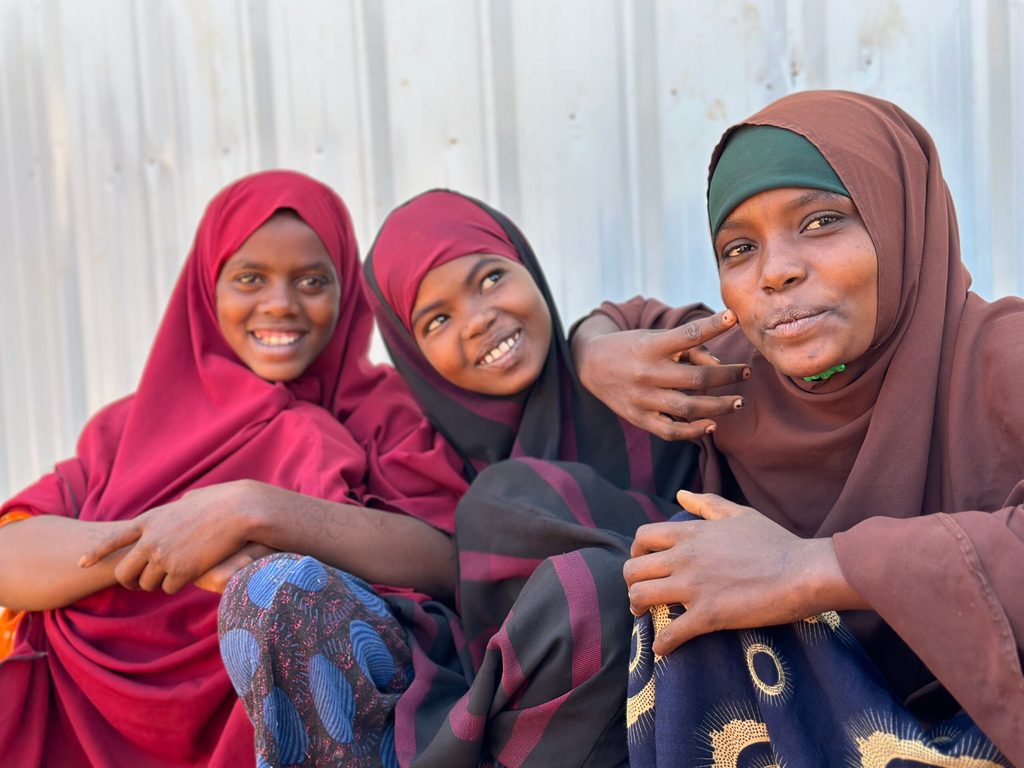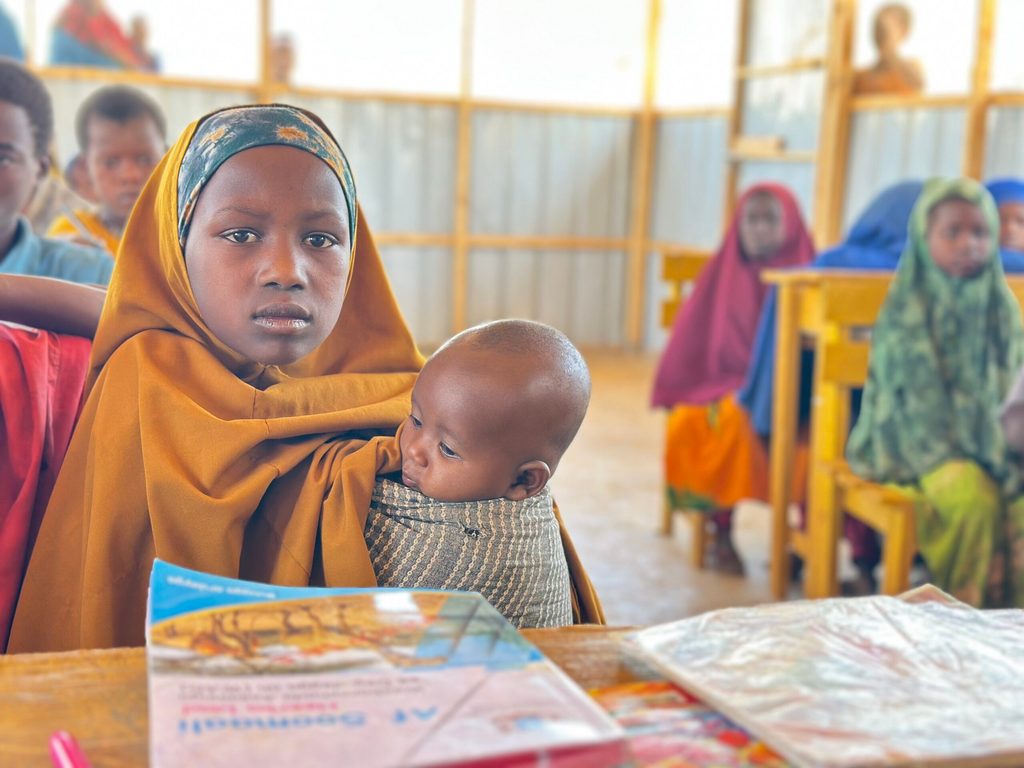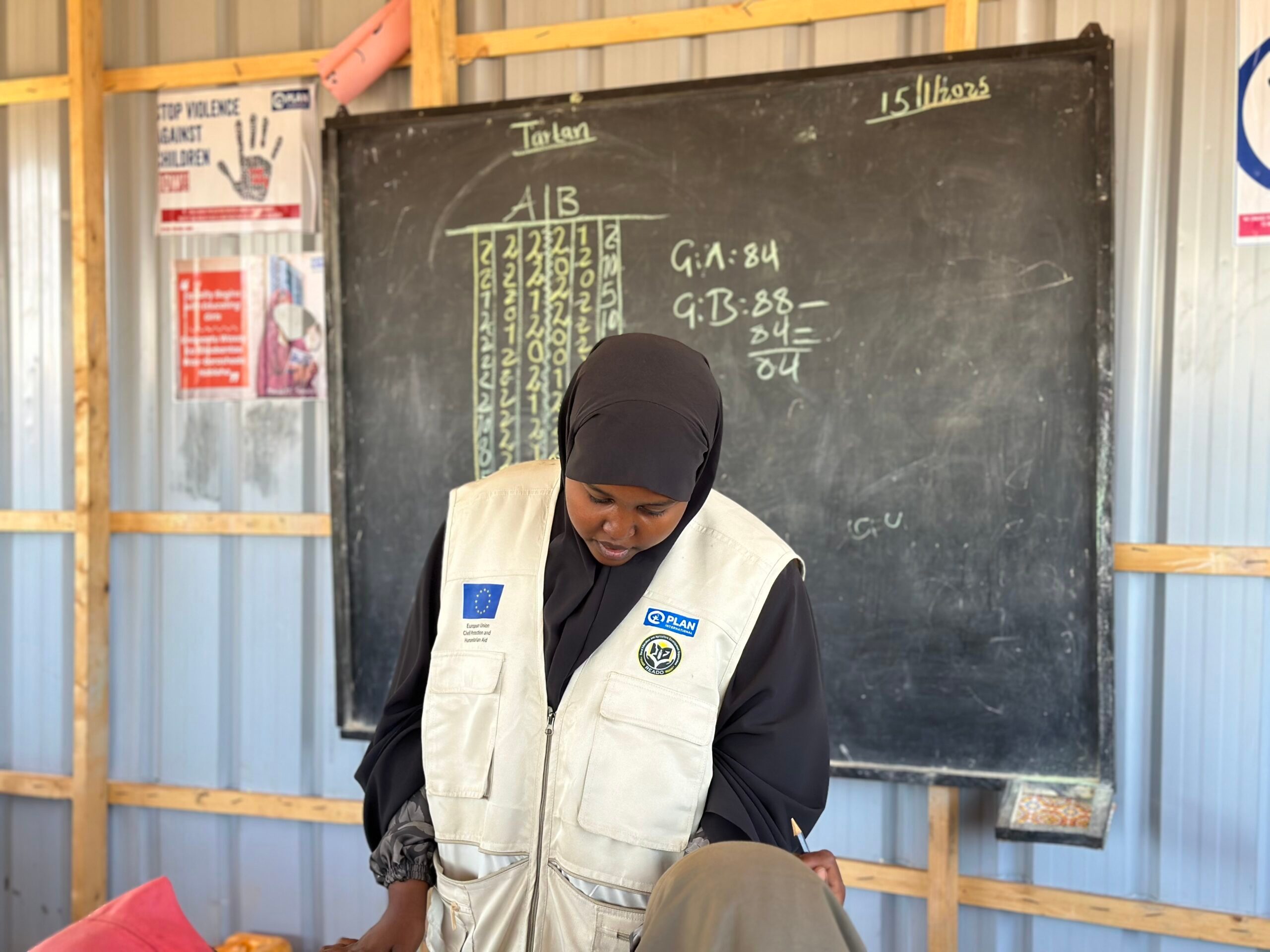A pathway to hope: education as a lifeline for Somalia’s children
How education in emergencies can help alleviate suffering and save children’s lives
12 May 2025Plan International, in partnership with DG ECHO, is providing education and child protection support to displaced children in Southwest Somalia, offering safe learning environments in 20 IDP sites across Bardhere and Baidoa.

Photo credit: Temporary Protection Learning Spaces operated by Plan International thanks to the support of DG ECHO in Jubaland, Somalia. Copyright: Plan International. All rights reserved.
Somalia is facing a complex and escalating humanitarian crisis driven by a number of factors, including recurrent climate shocks and prolonged insecurity.
A vast portion of the population has no access to safe water, education, and essential protection services. At the same time, the protective environment for children is deteriorating. More than 4 million children are out of school, with an estimated additional 900,000 at risk of dropping out, placing them in greater risk of exploitation, early marriage, recruitment into armed groups, and long-term exclusion from education.
Where schools do exist, many are severely lacking in trained teachers and learning materials. Girls and children with disabilities are particularly vulnerable, with a critical shortage of female teachers and nearly non-existent water, sanitation, and hygiene facilities. Alarmingly, three out of ten Somali girls are expected to marry before their 18th birthday.
Access to education remains extremely limited. The national primary net attendance ratio is estimated at just 30 percent for boys and 21 percent for girls. The most affected regions are Southern and Central Somalia, with over 3 million children out of school. In rural areas and Internally Displaced Persons (IDP) settlements, only 17 percent of children are enrolled in primary schools. Factors such as drought, food insecurity, poverty, and inequality further hinder efforts to increase school enrolment, with an estimated 2.4 million school-aged children categorised as food insecure.
Education that saves lives
Plan International, in partnership with DG ECHO, delivers an integrated education and child protection response for children and adolescents affected by displacement in Southwest Somalia. The project provides safe and inclusive access to protected learning environments, with a focus on newly displaced children in 20 IDP settings across the Bardhere and Baidoa districts.

First response centres (FRCs) and temporary protection learning spaces (TPLS) serve as critical entry points for children to access non-formal education, psychosocial support, and age-appropriate life skills. Alongside education, child protection services are mainstreamed to help establish a safe, supportive environment and promote children’s wellbeing.
Apart from covering immediate needs, the programme also contributes to longer-term durable solutions by strengthening community structures, supporting child protection mechanisms, and enhancing local capacity to sustain services beyond the immediate response.
Nuurto is one of the children affected by displacement. Unable to return to school, she stayed at home helping with daily household chores. When a learning space was later set up at her camp, she was excited to enrol. She now attends regularly, even though she brings her younger sister with her every day, as there is no one else at home to care for her. In response to needs such as Nuurto’s, Plan Somalia is exploring options to establish play-based early learning spaces, providing a safe and protective environment where younger children can engage in age-appropriate activities while their caregivers continue learning.

She shared that “before this centre was built, I wasn’t going to any school. I used to do only household chores, like many girls in my community, [and] we never had the chance to get an education.” Now enrolled in the TPLS, she brings her younger sister with her every day, so she doesn’t miss class. “I feel safe and comfortable learning and playing with my classmates. I won’t let anything stop me from learning, not even my responsibilities at home. I want to become a teacher so I can go back and educate children in the rural areas where I come from and give them the same chance I now have.”
The critical need for safe spaces
The EiE programme provides safe spaces for children, supervised by trusted adults, to protect them from harm during emergencies. In crisis-affected settings like Somalia, these spaces are crucial for restoring a sense of normalcy, allowing children to learn, play, and heal. As part of Plan’s EiE response, TPLS are established across displacement-affected communities. Staffed by trained teachers and assistants, these spaces facilitate structured learning, support children’s emotional well-being, and create a protective classroom environment.
Each TLS is equipped with gender-sensitive Water, Sanitation, and Hygiene (WASH) facilities and inclusive learning materials tailored to the needs of children affected by conflict and displacement. Additionally, TPLS are supported by child protection mobile teams, who identify and follow up with vulnerable children, offer psychosocial support, and manage referrals to specialised services. Together, education and child protection actors form an integrated frontline response, ensuring that children’s safety, dignity, and wellbeing are upheld while re-engaging them in learning.
The chance to access lifesaving learning
Teachers impart essential knowledge and skills to children, enabling them to keep themselves safe and share this information with their families. In Somalia, the EiE response addresses both learning recovery and child protection. Within the TPLS, trained teachers and assistants deliver the Ministry-endorsed Accelerated Basic Education curriculum while integrating lifesaving content into daily lessons.

Children learn about hygiene, child rights, protective behaviours, and how to identify and report harm. These critical messages are conveyed through age-appropriate, play-based methods that promote engagement and reinforce social-emotional learning. Additionally, Teacher Learning Circles facilitate peer reflection and practice-sharing, while Child-to-Child Clubs and Community Education Committees extend vital protection messages into households and communities, ensuring that lifesaving learning reaches beyond the classroom.
—
This project is funded by DG ECHO, European Union. The contents of this publication are the sole responsibility of Plan International and do not necessarily reflect the views of DG ECHO.


